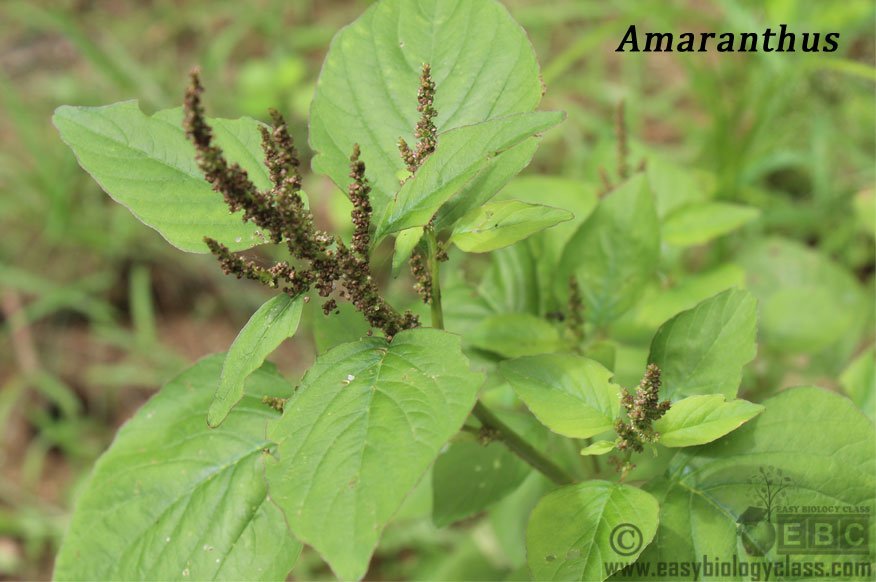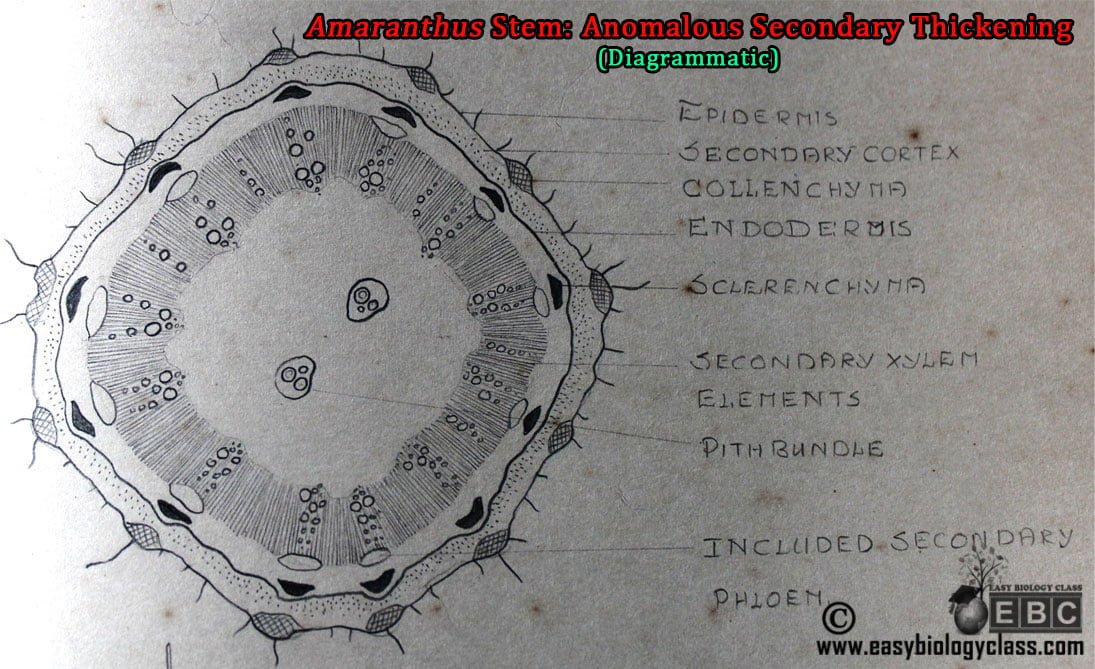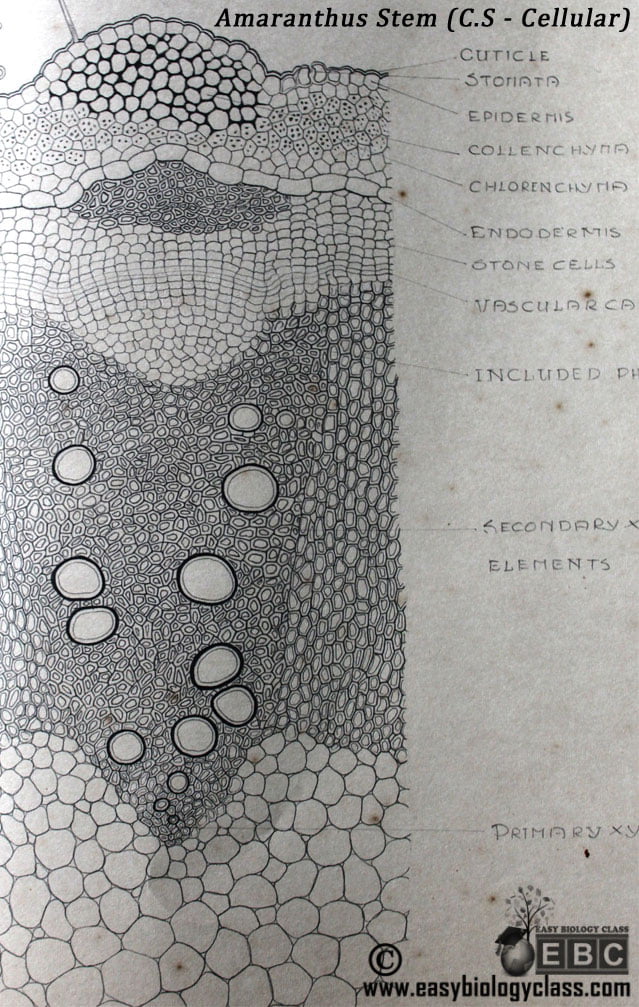Anomalous secondary thickening in Amaranthus and Achyranthes occurs due to the abnormal activity of an abnormal cambium. Here, new cambial rings are formed from the cortex or pericycle after the older cambium has ceased its functioning. The new cambial strip formed also behaves abnormally. This type of anomalous secondary thickening is common in many members of Amaranthaceae, Chenopodiaceae and Nyctaginaceae. Here we will discuss the Anomalous Secondary Growth in Achyranthes Stem / Amaranthus Stem (Amaranthaceae) with diagram.
Learn more: Dracaena Secondary Thickening
Learn more: Aristolochia Secondary Thickening
Anomalous Secondary Growth in Achyranthes Stem

Primary Structure
Ø The epidermis is single layered and parenchymatous.
Ø The hypodermis is few layered and collenchymatous.
Ø The cortex is parenchymatous.
Ø The endodermis is not very distinct.
Ø The pericycle occurs as small irregular sclerenchymatous patches.
Ø The stele is represented by two medullary bundles.

Secondary Structure of Achyranthus / Amaranthus
Ø The normal ring of vascular cambium is absent in the Amaranthus and Achyranthes stem.
Ø The cambium development is extra-stelar. (form outside the vascular bundles)
Ø A layer of cells from the pericycle become active and forms the cambial ring.
Ø The extra-stelar cambium behaves abnormally.
Ø Initially, it cut a small amount of parenchyma on the outer side and then starts to cut alternating patches of secondary xylem and parenchyma internally.
Ø Toward the outer side, it cut secondary phloem opposite to secondary xylem and parenchyma above the secondary parenchyma.
Ø This result in the formation of conjoint, collateral secondary vascular bundles arranged as a ring and it appears as embedded in the parenchymatous ground.

Ø After some time the cambium becomes inactive and stop its functioning.
Ø However, secondary accessory cambium develops from the secondary parenchymatous cells (produced by the first extra-stelar cambium).
Ø The newly formed accessory cambia also behave just like the previous one.
Ø Thus, the second vascular bundle-ring alternate with the first formed one.
Ø Subsequently, more and more cambia are produced and all of them behave exactly as mentioned above.
Ø Thus, a number of concentric rings of vascular bundles which appear as scattered in the ground tissue.
Ø The last cambial ring behaves differently.
Ø It cut secondary xylem alternating with sclerenchyma on the inner side.
Ø Hence the last ring of vascular bundles appears to be embedded in the sclerenchymatous zone.
Ø In the mature stem, the two medullary bundles and the pith disintegrate and form a cavity
<<< Back to Plant Anatomy Notes
